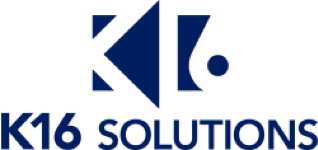Why Are Universities Disabling AI Detection Tools?
If identifying AI usage in student submissions is currently the number one pain point for higher education, why are universities across the globe choosing to turn off their AI detection tools?
The basic answer is that most AI detection tools aren’t effective. Some schools have even found some AI detection software to be inaccurate, causing more problems than it might solve.
Especially as more news about TurnItIn’s AI detection tool circulates, institutions are growing wary of this technology.
There is a better way. One that provides accurate, trustworthy data–when you invest in the right technology. First, let’s look at why some tools are failing at this monumental task and what sort of technology universities need to move forward in this new era of AI.
How TurnItIn AI detection software works
Currently, Turnitin gives no specifications on how it identifies if a submission was AI-generated or not. This lack of transparency combined with consistent inaccuracy make TurnItIn a risky technology to use for detecting AI writing.
What’s more concerning is that TurnItIn once claimed to promote a false positive rating of 1% but has since disclosed that number to be inaccurate without giving users an updated percentage. Some schools have found inaccuracies to be as high as 4%.
Additionally, TurnItIn requires faculty to scan each submission one at a time to check for AI writing. This sort of single-level reporting by submission is risky, not to mention a time-consuming task for faculty.

Plagiarism and detecting AI usage are completely different
Plagiarism detection tools scan documents for exact or slight rephrasing matches of existing content. But detecting AI usage is completely different. True AI detection tools aren’t just searching for copycat writing–they’re searching for writing that may be completely new.
Detecting plagiarism is where TurnItIn shines because that’s what it was originally created for, but you need technology that was specifically created to detect AI-generated content for the most accurate rating.
Let’s break down how true AI detection tools work.
How true AI detection tools work for universities
True AI detection tools will use a combination of the following methods to detect AI writing:
- Analyze the style and structure of the writing
- Use the generative AI against itself
- Use machine learning (ML) algorithms
- Scan for signature AI phrases
Scaffold AI Detection powered by GPTZero combines all four of these methods for the most accurate rating.
More importantly, Scaffold AI Detection can scan thousands of submissions at once and provides high-level reporting so that you can see which students use AI to create their submissions and in what classes or assignments see AI usage the most.
Detection tools should be used for reporting, not punitive measures

K16 Solutions’ job is to provide institutions in higher ed with the technology they need to make the most informed, strategic decisions possible. Based on our expertise, we suggest a mindset shift regarding AI usage from “catching AI” toward supporting students navigating these technologies.
AI is here to stay. There’s nothing we can do about that. What we can do is begin to use tools like ChatGPT to our advantage.
Unlike plagiarism, students will be increasingly encouraged to use AI. The key is to identify the appropriate times and methods to use AI that still uphold academic integrity.
Technology that helps universities build effective AI usage guidelines
Scaffold AI Detection reporting gives a big-picture perspective on three main classifications of AI usage:
- Mostly AI written
- Mixed
- All human
Scaffold AI Detection is now available to Canvas users. Schedule a free demo to see how this technology can build reporting capabilities across your LMS.

